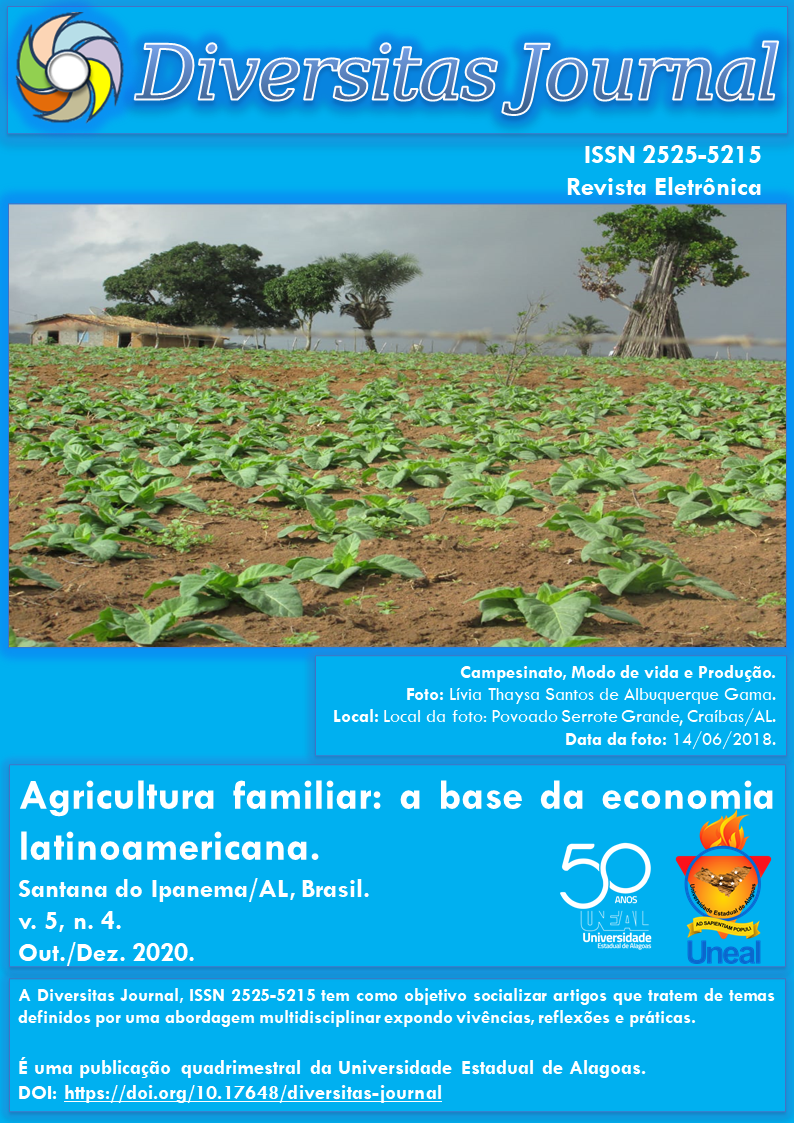Production and physical-chemical, microbiological and sensorial characterization of prebiotic fermented milk beverages flavor tamarindo
DOI:
https://doi.org/10.17648/diversitas-journal-v5i4-1199Abstract
ABSTRACT: Cheese whey is a co-product produced in large quantities by the dairy industry that has a high potential for use as a raw material because it is highly nutritious. On the other hand, the use of green banana biomass flour has been widely used as a natural thickener by the food industry as it is a healthier and cheaper option. Within this context, this work studied a better formulation for the production of a fermented milk drink, tamarind flavor, based on cheese whey and green banana biomass. For this, a central rotational composite design (DCCR) 22 was carried out, with three repetitions at the central point, where 11 formulations were prepared, varying the concentration of cheese whey (30-50%) and green banana biomass flour (0.29 – 1.7%). In the 11 formulations, physical-chemical, microbiological characterization and acceptance test were carried out for 60 consumers. Regarding the physical-chemical aspects, dairy drinks with up to 40% of serum were within the standards of the legislation and with formulations of low lipid content (≤2%) and high protein value (≥ 1%). Regarding microbiological analysis, all formulations were within the standards. The use of cheese whey up to 50% and biomass flour up to 1% were advantageous in the production of a sensorially accepted milk drink. In the end, the formulation of a new product with good acceptance and low cost presents itself with potential for commercialization and diversification in the production of dairy products for agribusinesses in Brazil.
KEYWORDS: Technological Innovation, Regional fruit, DCCR.
Metrics
Downloads
Published
How to Cite
Issue
Section
License
Copyright (c) 2020 Silvania Alves Ladeira, Maria Eduarda Melo da Paz, José Rafael Rodrigues Lima, Filipe de Oliveira Melo, Simone Vilela Talma, Juliano Silva Lima

This work is licensed under a Creative Commons Attribution 4.0 International License.
The Diversitas Journal expresses that the articles are the sole responsibility of the Authors, who are familiar with Brazilian and international legislation.
Articles are peer-reviewed and care should be taken to warn of the possible incidence of plagiarism. However, plagiarism is an indisputable action by the authors.
The violation of copyright is a crime, provided for in article 184 of the Brazilian Penal Code: “Art. 184 Violating copyright and related rights: Penalty - detention, from 3 (three) months to 1 (one) year, or fine. § 1 If the violation consists of total or partial reproduction, for the purpose of direct or indirect profit, by any means or process, of intellectual work, interpretation, performance or phonogram, without the express authorization of the author, the performer, the producer , as the case may be, or whoever represents them: Penalty - imprisonment, from 2 (two) to 4 (four) years, and a fine. ”


















